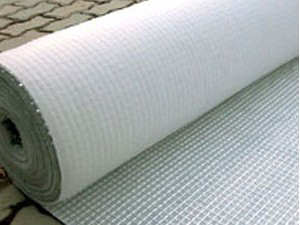
Geotextiles have become a special type of synthetic material that has been widely received for its diverse application in civil engineering and environmental projects. One of the key areas they are applied is in managing soil moisture. This article, therefore, looks at geotextiles’ multifarious role in soil moisture management including their functions, types, installation methods as well as environmental effects.
Moisture content within soils determines the health and productivity of ecosystems, agricultural lands and infrastructure stability. Excessive wetness can cause erosion, slope instability and decrease soil fertility while inadequate amount can hinder plant growth and worsen drought conditions. These permeable and durable materials help to regulate soil moisture levels thus providing solutions to these challenges.
Filtration: Infiltration is the main function; which allows water through but holds back other solid particles from moving along with it thus preventing clogging of drainage systems.
Drainage: Geotextiles enable water flow out off a saturated ground so that there can be no more flooding or any associated destructive problems like root rotting and erosion.
Retention: Some kinds of geotextiles are composed to hold water inside the earth especially during dry spells or in arid zones. They store water thereby allowing plants access it enabling them exist in such regions.
Erosion Control: Wind or water-related soil erosion is limited by geotextiles which stabilize the surface against such an occurrence through prevention of topsoil loss and preservation of structure due to anchoring of particles on it.
Woven Geotextile Fabrics: Manufactured from polypropylene or polyester fibers woven fabrics are known for having high tensile strength making them common where filtration is coupled with stabilization needs.
Non-Woven Geotextile Fabrics: They are created by mechanically, thermally or chemically entangling synthetic fibers into web-like structures called needle-punching. Drainage areas and filtration cases are recommended using this specific type since they have uniform composition and high permeability.
Hybrid Geotextiles: They combine characteristics of woven as well as non-woven geofabrics hence can be applied in different ways such as erosion control, soil moisture regulation or reinforcement.
Biodegradable Geotextile Fabrics: These decompose over time while acting as temporary support for soil stabilization and erosion control without any form of environmental damage.
Surface Application: The geotextiles are spread directly on the ground surface and fixed with pegs or stakes to make them stay. This method is popularly used to manage erosion and stabilize slopes.
Incorporation: During construction or renovation projects, geotextiles are placed within various layers of soil in order to improve its firmness, percolation rate, promote vegetation growth among other benefits.
Wraparound: Soil infiltration around drainage pipes or structures is prevented by wrapping such devices with geotextiles which also maintain hydraulic conductivity upon their installation on it. Such a methodology is commonly implemented at underground drainage systems together with retaining walls.
Resource Consumption: A lot of energy and resources go into the production of synthetic geosynthetics thereby contributing to carbon emissions and depletion of natural resources available on earth’s surface (Koerner, 1998).
Waste Generation: Throwing away geotextiles poorly can lead to pollution of the environment and destruction of habitats. The latter option is more sustainable as it minimizes the amount of waste that will be stored in the long run.
3.Ecological Disturbance: One such example is when geotextile construction takes place within sensitive places like wetlands and riparian zones, this may bring temporary disturbance to ecosystems and habitat structure.
4.Long-Term Durability: Therefore, by choosing durable substances for geotextiles, which are characterized by long service life, the necessity for frequent replacements can be reduced thereby bringing down environmental impacts arising from production and disposal processes.
Conclusion
Geotextiles play a significant role in controlling soil water content that helps to manage several issues including water infiltration, drainage, retention and erosion control. Understanding their use, kind, laying techniques and ecological effects helps engineers or environmentalists make informed choices on using them at various sites. By using them responsibly and coming up with new ones, they will remain relevant in ensuring soil management practices that are sustainable globally.






